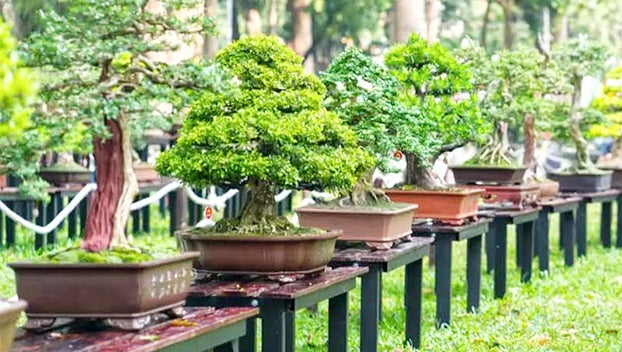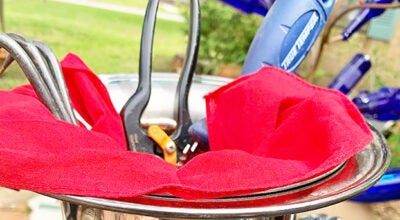MASTER GARDENER — Bonsai gardening for everyone with small start, big Zen
Published 12:08 am Wednesday, April 12, 2023

- Garden pic The Bonsai art form offers the viewer an extraordinary and distinguished composition. Here, a bonsai Master demonstrates craft using shape, form and structure, mimicking mature tree forms in nature. (stylesatlife.com)
|
Getting your Trinity Audio player ready...
|
A reader recently asked me to write about bonsai tree requirements, but more specifically, how to keep bonsai trees alive during the seasons.
Let’s begin with a brief history of Bonsai, which in Japanese literally translated means, ‘planted in a container’ and is an ancient art form from Japan, though its origin is traced to China. Bonsai specifically refers to a type of container the tree grows in, such as a small clay pot, wooden board or flat stone.
The ‘art of bonsai’ is practiced with the intent to invoke meditation for viewers, while demonstrating tranquil and skilled-cultivation of the grower. A Bonsai master can produce trees, which are diminutive forms of their natural counterparts.
The size and shape of a bonsai tree is achieved through pruning new growth and binding the roots into small containers.
There are numerous types of trees and shrubs which can be cultivated as bonsai, such as Azalea, Ficus, Cypress, Norfolk Island Pine, Juniper, Japanese Maple to name a few, however there are many other species and varieties are used as well.
OUTDOOR BONSAI – ‘Traditional’ bonsai trees are grown outside, which allows the trees to mimic the needs of their much larger counterparts. They are unable to be sustained indoors, though numerous tropical species can be grown as bonsai indoors.
There are cultivars available that have been crafted specifically for indoor growth. A traditional bonsai can be displayed outdoors if nighttime temperatures remain above 40 degrees. Below 40 degrees bonsai can be maintained indoors with grow lights or a south facing window.
Note almost all bonsai require elevated humidity levels and need to be near a humidifier or placed onto a tray of pebbles holding water.
INDOOR BONSAI – while not traditional, are available today and can thrive in our home’s environment. The most common, and by far the easiest to care for is the Ficus and Norfolk Island Pine trees. Both are tolerant of low humidity, and each are very resilient, making them an excellent choice for novice bonsai enthusiasts.
There are other popular indoor bonsai as well, such as Fukien tea tree (Carmona), Schefflera (Hawaiian umbrella) and Sageretia (Sweet plum). Each of these bonsai tree types prefers bright but not direct sunlight. And while not required, will appreciate increased humidity levels to allow the trees to perform at their best, so place a container of water nearby or place the trees on a tray of pebbles with water.
BONSAI ‘THE GOAL’ – the goal of bonsai is to manage shape and form, developing beautiful trees, which are miniature copies of the trees found in nature. Many bonsai trees can be germinated from seed or propagated by cuttings.
Tree shape is controlled through manual pruning at numerous intervals throughout the growing season, to create the desired shape and amount of foliage. There are numerous methods and techniques for pruning to provide the desired results but understand this will take trial and error to discover how your tree will respond to the various pruning methods.
Root pruning is also required but this must only be performed during the summer, and no more than twenty-five percent of the tree’s roots can be removed.
Note limb pruning and root pruning must not be performed simultaneously, as the tree cannot sustain both types of pruning at once. The goal is achieving an aged and proportional specimen and when properly taken care of bonsai trees can grow to be very old.
The bonsai tree creates a stress-relieving, serene environment that is conducive to contemplation and has a visually attractive commanding appearance.
You can easily produce your own private Zen Garden pairing bonsai trees and orchids to create a meditative, stress relieving and beautiful environment. So long for now fellow gardeners, let’s go out and grow ourselves a greener, more ‘Zen-ful’ world, one bonsai tree at a time!
John Green is Texas Certified Master Gardener with Orange County Master Gardeners. To have gardening questions answered in detail, contact him at jongreene57@gmail.com, reach out to Orange County Master Gardeners Helpline at 409-882-7010 or visit https://txmg.org/orange, Facebook: Orange County Texas Master Gardeners Association or by email extension@co.orange.tx.us.





